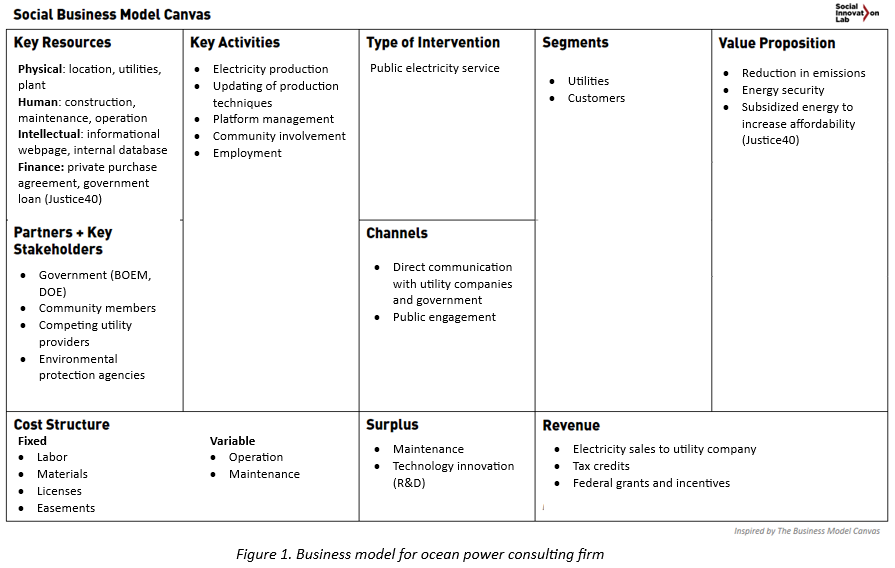
Over the summer before my junior year, I pursued a short-term study abroad opportunity in Iceland through a collaboration between The Green Program and Reykjavik University, “Renewable Energy Innovation and Sustainability.” Through this course, I attended lectures on renewable energy and sustainability at the university, toured geothermal energy and hydroelectric plants, and practiced leave-no-trace principles. This culminated into the development of a final capstone project with an associated business plan along with a group of four other students.
This project was focused on evaluating the feasibility of ocean power implementation in coastal cities across the US to help reduce energy burden on marginalized, low-income communities. We were able to identify five UN sustainable development goals that our project aligned with: (7) Affordable and Clean Energy; (9) Industry, Innovation, and Infrastructure; (11) Sustainable Cities and Communities; (13) Climate Action; (14) Life Below Water. As part of the capstone, we proposed a business model (Figure 1) for an ocean power-based utility plant.
The model describes the four key resources needed for the business, a public electricity service: (1) physical (location, utilities, plants), (2) human (construction, maintenance, operation), (3) intellectual (internal databases, informational webpage), and (4) financial (private purchase agreements, government loans, i.e. Justice40 initiative). Its key activities include electricity production, updating of production techniques, platform management, community involvement, and employment. Most revenue would come from electricity sales to utility companies, tax credits, and federal grants and incentives. As for the cost structure, fixed expenditures would include labor, materials, licenses, and easements, whereas operation and maintenance costs would vary. Primary stakeholders include the US government (BOEM, DOE), local community members, competing utility providers, and environmental protection agencies. Overall, this initiative would result in reductions in emissions, increased energy security, and subsidized energy to increase affordability.
Through the development of this business model, my team and I had to consider its economic viability as well as the potential for its implementation. To address my chosen grand challenge, “Restore and Improve Urban Infrastructure,” and successfully develop sustainable solutions, an understanding of cost and project lifecycle are critical. GCSP has helped me to gain a better understanding of what factors come into play when putting equitable engineering initiatives into practice. 
University of Portland
5000 N. Willamette Blvd.,
Portland, Oregon 97203-5798
503.943.8000
This website uses cookies to track information for analytics purposes. You can view the full University of Portland privacy policy for more information.
